Una introducción necesaria
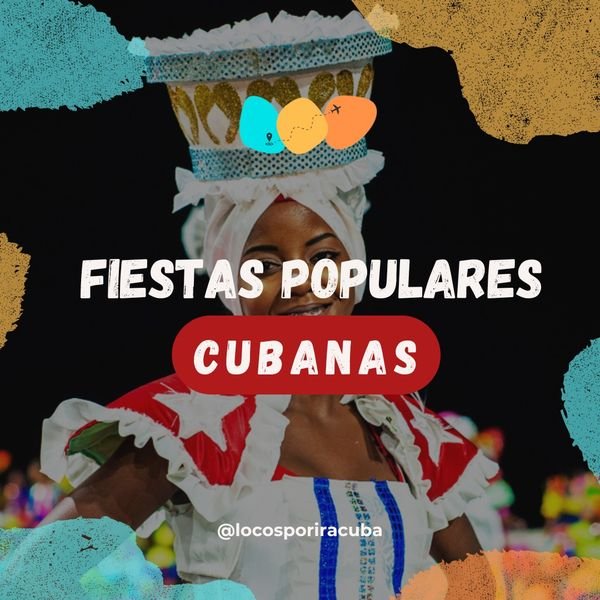 fuente
fuenteLo anterior significa que tenemos cosas que nos asemejan, pero otras que nos distinguen y nos hacen únicos. También se puede entender como aquellas cosas que continuamos de generación en generación y están arraigadas a nuestra manera de ser, decir y actuar.
Tradiciones, costumbres y cultura
Cuando buscamos el concepto de cultura, pueden aparecer diferentes acepciones, pero este concepto está ligado con el conocimiento, las manifestaciones y características que distinguen a un grupo de personas de una región o un país. En mi caso particular, considero a la cultura como la tradición del carácter y el amor a lo que somos y nos distingue.
Muchas son las tradiciones que distinguen a un país, una región, incluso a una comunidad. En mi caso, quiero dejarle diez tradiciones cubanas, muchas de las cuales tienen una participación foránea que la prestigian y distinguen. Aquí van estas tradiciones:
DIEZ TRADICIONES CULTURALES CUBANAS
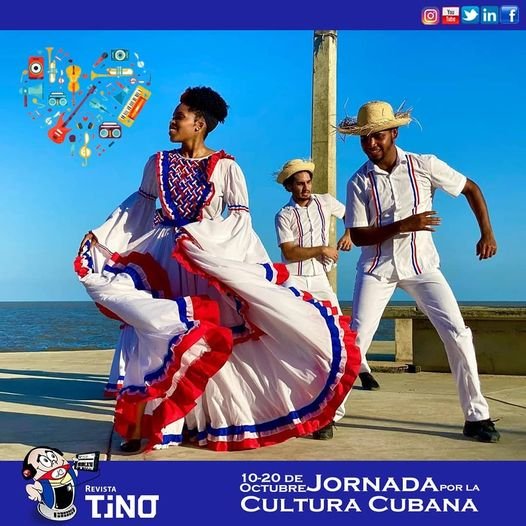 fuente
fuenteDía de la Cultura Nacional: El 20 de octubre de 1868 se cantó el Himno Nacional cubano por primera vez y, en honor a ello, se celebra cada 20 de octubre el Día de la Cultura cubana. Estas letras fueron compuestas por Pedro Figueredo y constituye la canción más entonada por los cubanos y una muestra de respeto y orgullo.
Cada vez que un cubano alcanza una medalla dorada en juegos deportivos y suenan las notas de nuestro himno nacional, sentimos un orgullo por una de nuestras tradiciones más importantes.
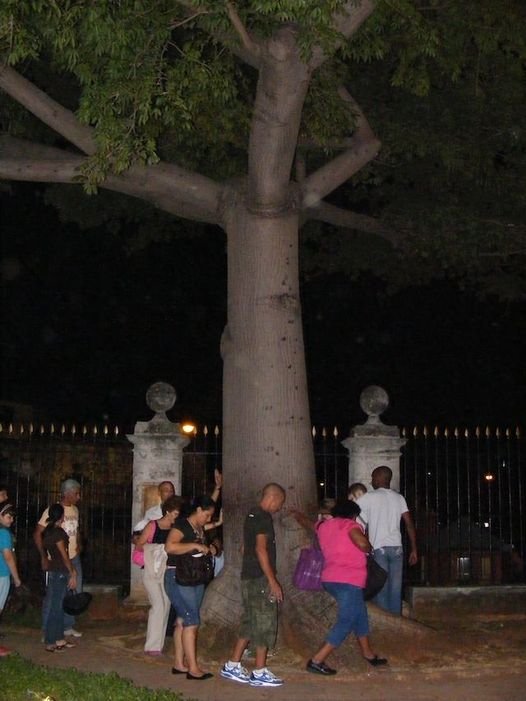 fuente
fuenteLa vuelta a la Ceiba: Esta es una de las tradiciones más representativas de los habitantes de La Habana, capital cubana y se celebra cada 16 de noviembre, fecha en la que muchos cubanos van a darle la vuelta a la ceiba que está en el Templete, con motivo de la celebración de San Cristóbal, patrono de La Habana y fecha de celebración por la fundación de la villa de San Cristóbal de La Habana.
Según la tradición, se le da tres vueltas a la ceiba en sentido contrario a las manecillas del reloj, y se le pide un deseo. Muchas personas dejan cerca de la ceiba algunas monedas u otros objetos de carácter religioso.
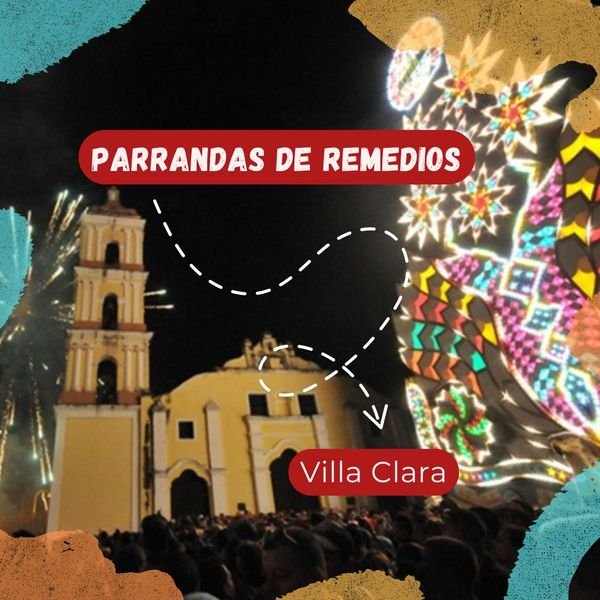 fuente
fuenteParrandas de Remedios: Estas fiestas se desarrollan en varios municipios del país, pero, son emblemáticas de Remedios, un municipio de Villa Clara, y tienen su origen en el siglo XVIII y son ferias callejeras o fiestas de barrios parecidas a los carnavales. En este caso se compite entre barrios, con carrozas, comparsas, cánticos de niños, exposiciones de platos tradicionales y costumbres que distinguen a cada uno de los pueblos del municipio. Ha sido tanta la popularidad que otros lugares del país han decidido asumir este tipo de celebraciones.
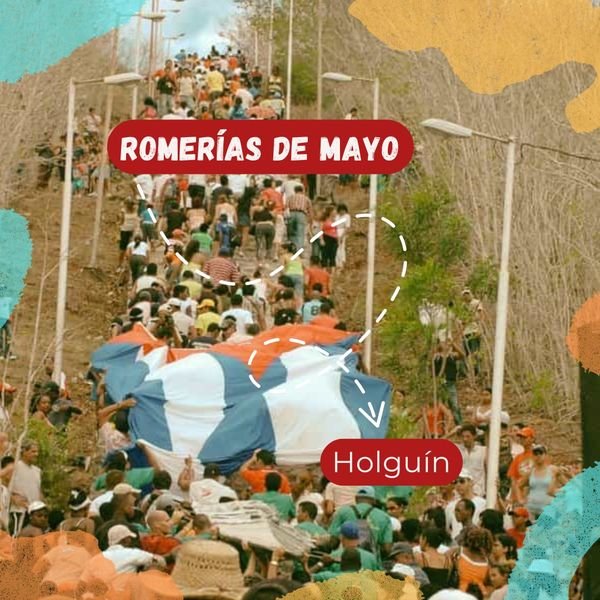 Fuente
FuenteRomerías de Mayo: En Cuba, mayo es el mes de las madres, las flores y las Romerías de Mayo. Estas son las fiestas del arte joven de Cuba. Se celebran en la provincia de Holguín y abarcan todas las manifestaciones de la cultura, pero, con la particularidad de utilizar a las calles y los espacios populares como sus sedes principales.
Las romerías comienzan con la subida a un lugar llamado La Loma de la Cruz y se sube una gran cruz, como tradición primaria, se hace una peregrinación, se habla y deja inaugurada la actividad y comienza un desfile de arte que es de las tradiciones culturales más queridas y seguidas en todo el país.
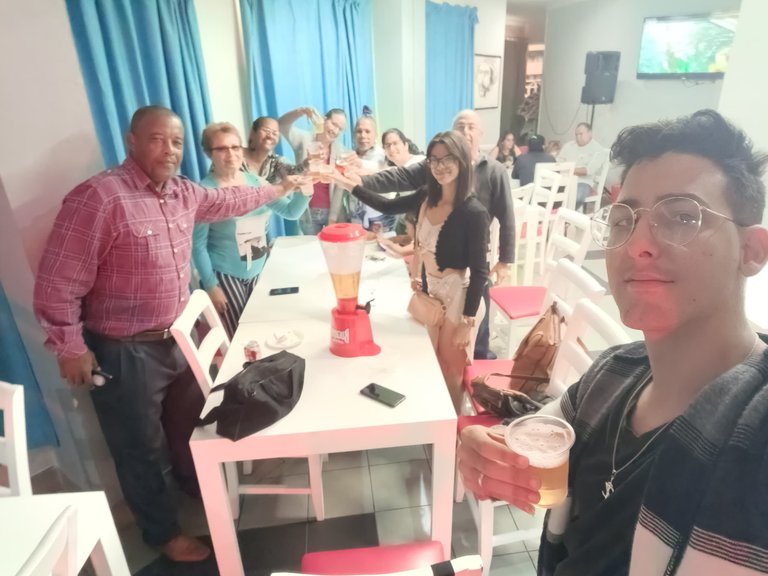
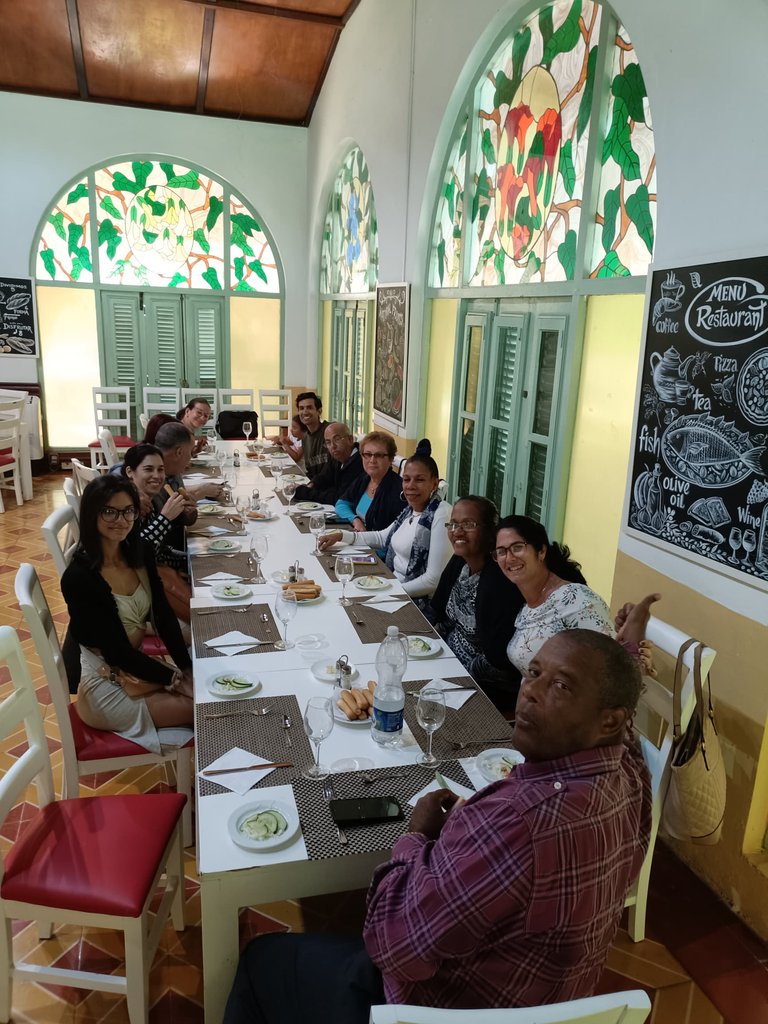
Cumpleaños Colectivos: Esta es una tradición que tenemos en muchos colectivos laborales y es celebrar el cumpleaños de un grupo de trabajadores por meses. El objetivo es que cada uno de nuestros compañeros sienta que es querido por cada uno de nosotros. En esa actividad se les hace regalos, se hacen compartir, se pasan videos con sus principales logros. Es una de las tradiciones más lindas que tenemos.
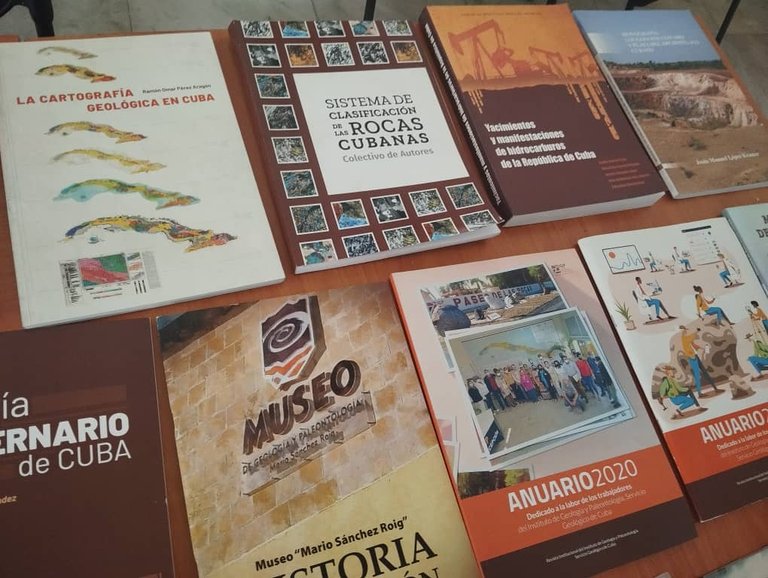
Feria Internacional del Libro: Este es el mayor acontecimiento cultural del país porque involucra a millones de personas y se realiza en todo el país. Se inicia, en febrero, con la Feria Internacional de la Habana y después de dos semanas se extiende a lo largo y ancho de todo el país. Tiene entre sus incentivos la venta y presentaciones de libros, intercambios de experiencias entre editoriales, conferencias magistrales, exposiciones y, cada año, hay un país que es el invitado de honor.
Es una de las tradiciones a las que está vinculado el lugar donde trabajo, porque tenemos una editorial que participa de manera activa en esta fiesta del libro y el saber.
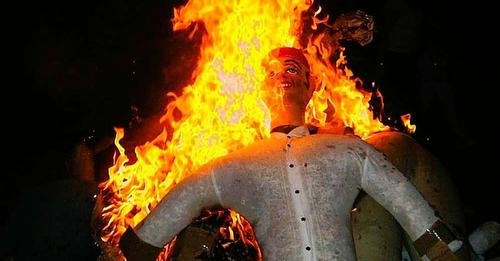 fuente
fuenteQuemar el muñeco: Esta es una tradición muy cómica y que se realiza en las comunidades o en las viviendas y se hace el último día del año para decirle adiós al año que terminó y que se lleve todo lo malo que nos dejó.
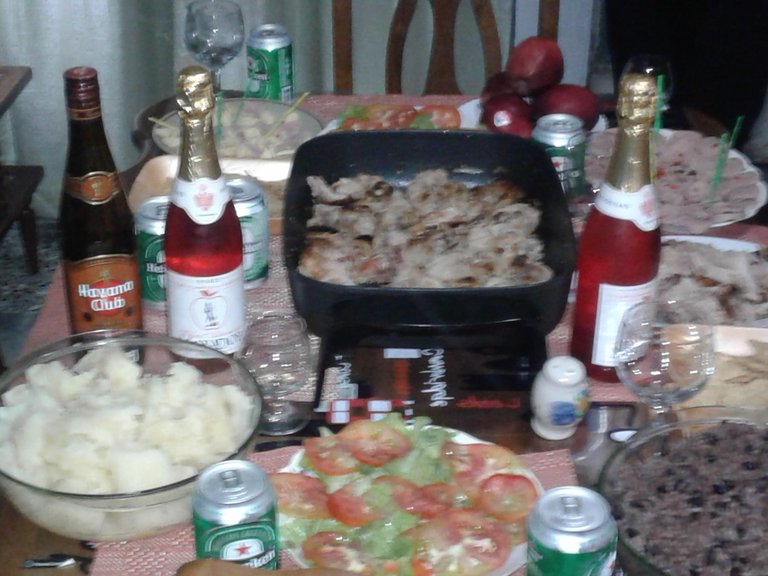
Cena de fin de año: El 31 de diciembre es la culminación de un periodo importante en la vida de cada ser humano porque es el momento de valorar lo realizado, lo que dejamos de hacer y trazarnos nuevas metas para el próximo año. Sin embargo, algo que distingue esta celebración es la cena que se hace para un día como este y que en Cuba está compuesta por congrí, cerdo asado, yuca, ensalada y postre. En el caso del postre, las personas tienen preferencias variadas como dulce de toronja, torrejas o turrón de alicante.

Día de año nuevo: Un día de celebración que se celebra en todos los hogares cubanos y, es una fiesta parecida a la del día anterior. Se reúnen los familiares y amistades y comparten sueños por cumplir, ideas y mucho más. Además de los platos, la cerveza, vino o el ron, también está presente la música, algo que no puede faltar en ninguna fiesta cubana.
Para mí es la tradición que más quiero y celebro porque es mi cumpleaños.
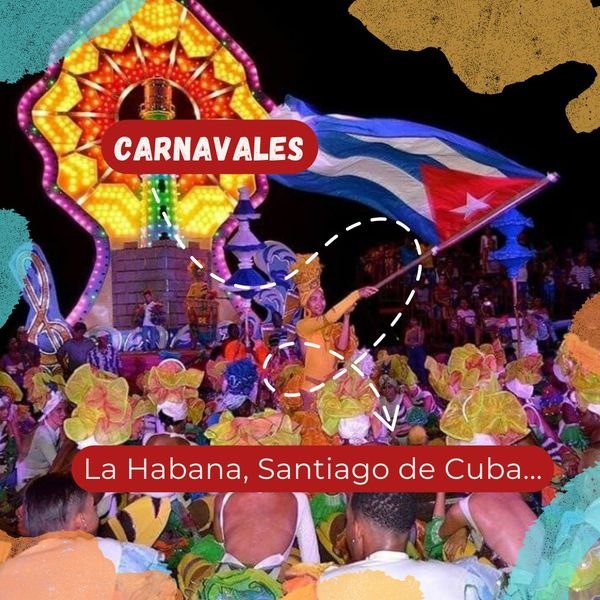 fuente
fuente
Los carnavales: Para mí, estas son las mayores muestras de tradición que existen porque adoptan las costumbres y hábitos de cada lugar. Son fiestas populares que han trasladado de generación en generación los bailes, rituales, expresiones culturales y todas las tradiciones que han conformado los elementos identitarios de cada uno de los pueblos del mundo, porque esta fiesta se hace en el planeta completo.
Nota: He utilizado el traductor de Google.
Las fotos fueron tomadas son de mi propiedad tomadas con mi teléfono Samsung J2.
Las imágenes tienen sus fuentes reseñadas.
ENGLISH
A necessary introduction
Every time I talk about traditions, culture and traits that define us as a nation, I look for the song by the Cuban duo Buena Fe titled “Each country,” which begins this way: Each country in a universe within the universe, a hive of dreams and inheritances, complaints and suggestions.
 fuente
fuenteThe above means that we have things that are similar to us, but others that distinguish us and make us unique. It can also be understood as those things that we continue from generation to generation and are rooted in our way of being, saying and acting.
Traditions, customs and culture
When we look for the concept of culture, different meanings may appear, but this concept is linked to the knowledge, manifestations and characteristics that distinguish a group of people from a region or a country. In my particular case, I consider culture as the tradition of character and love for what we are and what distinguishes us.
There are many traditions that distinguish a country, a region, even a community. In my case, I want to leave you ten Cuban traditions, many of which have foreign participation that gives them prestige and distinction. Here are these traditions:
TEN CUBAN CULTURAL TRADITIONS
 fuente
fuenteNational Culture Day: On October 20, 1868, the Cuban National Anthem was sung for the first time and, in honor of this, Cuban Culture Day is celebrated every October 20. These lyrics were composed by Pedro Figueredo and constitute the song most sung by Cubans and a sign of respect and pride.
Every time a Cuban reaches a gold medal in sports games and the notes of our national anthem sound, we feel pride in one of our most important traditions.
 fuente
fuenteThe return to the Ceiba: This is one of the most representative traditions of the inhabitants of Havana, the Cuban capital, and is celebrated every November 16, the date on which many Cubans go to return to the ceiba tree that is in the Templete. , on the occasion of the celebration of San Cristóbal, patron saint of Havana and date of celebration for the founding of the town of San Cristóbal de La Habana.
According to tradition, you turn the ceiba tree three times counterclockwise, and make a wish. Many people leave some coins or other religious objects near the ceiba tree.
 fuente
fuenteParrandas de Remedios: These festivals take place in several municipalities of the country, but they are emblematic of Remedios, a municipality of Villa Clara, and have their origin in the 18th century and are street fairs or neighborhood festivals similar to carnivals. In this case, there is competition between neighborhoods, with floats, troupes, children's songs, exhibitions of traditional dishes and customs that distinguish each of the towns in the municipality. The popularity has been so great that other places in the country have decided to take on this type of celebrations.
 Fuente
FuenteMay pilgrimages: In Cuba, May is the month of mothers, flowers and the May pilgrimages. These are the festivals of young art in Cuba. They are celebrated in the province of Holguín and cover all manifestations of culture, but with the particularity of using the streets and popular spaces as their main venues.
The pilgrimages begin with the climb to a place called La Loma de la Cruz and a large cross is climbed, as a primary tradition, a pilgrimage is made, there is talk and the activity is inaugurated and an art parade that is part of the cultural traditions begins. most loved and followed throughout the country.


Collective Birthdays: This is a tradition that we have in many work groups and it is celebrating the birthday of a group of workers for months. The goal is for each of our colleagues to feel that they are loved by each of us. In this activity, they are given gifts, they are shared, and videos are shown with their main achievements. It is one of the most beautiful traditions we have.

International Book Fair: This is the largest cultural event in the country because it involves millions of people and is held throughout the country. It begins in February with the Havana International Fair and after two weeks it spreads throughout the country. Among its incentives are the sale and presentations of books, exchanges of experiences between publishers, keynote conferences, exhibitions and, every year, there is a country that is the guest of honor.
It is one of the traditions to which the place where I work is linked, because we have a publishing house that actively participates in this festival of books and knowledge.
 fuente
fuenteBurning the doll: This is a very comical tradition that is carried out in communities or homes and is done on the last day of the year to say goodbye to the year that ended and take away all the bad things it left us.

End of the year dinner: December 31 is the culmination of an important period in the life of every human being because it is the time to evaluate what we have done, what we stopped doing and set new goals for the next year. However, something that distinguishes this celebration is the dinner that is made for a day like this and that in Cuba is composed of congrí, roast pork, yucca, salad and dessert. In the case of dessert, people have varied preferences such as grapefruit candy, torrejas or nougat from Alicante.

New Year's Day: A day of celebration that is celebrated in all Cuban homes and is a party similar to the previous day. Family and friends get together and share dreams to fulfill, ideas and much more. In addition to the dishes, beer, wine or rum, music is also present, something that cannot be missing at any Cuban party.
For me it is the tradition that I love the most and I celebrate because it is my birthday.
Carnivals: For me, these are the greatest examples of tradition that exist because they adopt the customs and habits of each place. They are popular festivals that have passed on from generation to generation the dances, rituals, cultural expressions and all the traditions that have made up the identity elements of each of the peoples of the world, because this festival is held throughout the entire planet.
Note: I have used Google translator.
The photos were taken are my property taken with my Samsung J2 phone.
The images have their sources reviewed.
Muy hermoso todo lo que hoy nos compartes, gracias por mostrarnos parte de sus tradiciones ❤️
Gracias a usted por su gentileza y generosidad. Feliz jornada. Salud y saludos.
It's good to learn about the culture of the cubans.
Culture makes us unique. Keep up the good work.
Thank you very much for appreciating and supporting our work. Happy journey. Greetings and best regards.
Hermosas nuestras tradiciones, adoro cada una de ellas. Es algo que no podemos dejar pasar por alto nosotros los cubanos. Un saludo para ti y muy buen post amigo. Feliz día.
Así mismo es estimada amiga.
Nuestras tradiciones nos definen e identifican.
Feliz jornada. Salud y saludos.
Has sido votado por
PROYECTO ENLACE
'Conectando Ideas y Comunidades'
PROYECTO ENLACE es un proyecto de curación de habla hispana enfocado en recompensar contenido de calidad y apoyar autores en su proceso de crecimiento en HIVE.
Creemos y apostamos por el futuro de esta gran plataforma, y estamos muy emocionados de poder hacerla crecer junto a esta comunidad. Así que te invitamos a publicar en nuestra COMUNIDAD y estar atento a todas las actividades que tenemos preparadas y que estaremos publicando en breve.
¿QUIERES AUTOMATIZAR TUS GANANCIAS DE CURACIÓN? SE PARTE DEL PROYECTO ENLACE APOYANDO A NUESTRO TRAIL EN HIVE.VOTE INGRESA AQUÍ PARA CONOCER LOS DETALLES.
¿QUIERES INVERTIR ENLACE? DESCUBRE COMO HACERLO Y GENERAR INGRESOS DE FORMA SEMANAL MEDIANTE TU DELEGACIÓN DE HP AQUÍ TE EXPLICAMOS COMO.
Te invitamos a participar en nuestro servidor de Discord: https://discord.gg/3S9y7BbWfS
Atentamente
EQUIPO ENLACE 2024
Mi agradecimiento eterno a los miembros de este proyecto por su generosidad y gentileza con nuestro trabajo. Les deseo una excelente jornada. Salud y saludos.
Disfruté muchísimo este recorrido por las tradiciones de tu país, todas hermosas, con una gran riqueza cultural... y aunque me gustaron todas, me encantaron dos en particular; la vuelta a la ceiba y los cumpleaños colectivos. Esa fe que le ponemos a los momentos de pedir un deseo conectada con una tradición tan bonita, es lo que permite la magia de verlos materializados, y ni hablar del maravilloso valor de la amistad mientras están celebrando un año más de vida para los amigos. Gracias por brindarnos esta hermosa participación mi querido amigo, un gran abrazo.
La vuelta a la ceiba se celebra este 16 de noviembre y es increíble la gran cantidad de personas que asisten.
Los cumpleaños colectivos son los que más disfruto por el contacto distendido y amigable y todo lo que representan. Gracias por pasar y comentar. Salud y saludos.
MI querido amigo @tonyes, que interesante esas costumbres y celebraciones en tu país, pero las que mas llamaron mi atención fue el paseo a la ceiba y la de celebrar los cumpleaños en conjunto en los trabajos. Me encanta descubrir los lugares que no conozco a través de los ojos de sus visitantes o de quienes hacen vida en el lugar, porque me imagino todos los escenarios y si vienen acompañados con fotos, los valoro mas. Gracias por compartir un pedacito de tu tierra con nosotros, un abrazo!!!
En estos momentos que vivimos los cubanos,.palabras como esas curan y sanan. Feliz semana. Salud y saludosGracias a ti querida amiga @brujita18 por tus palabras.